Written in Blood
TWENTIETH-CENTURY BATTLES
Spencer C. Tucker, editor
Balkan Breakthrough: The Battle of Dobro Pole 1918
RICHARD C. HALL
The Battle for Manchuria and the Fate of China: Siping, 1946
HAROLD TANNER
The Battle for Western Europe, Fall 1944: An Operational Assessment
JOHN A. ADAMS
The Battle of An Loc
JAMES H. WILLBANKS
Battle of Dogger Bank: The First Dreadnought Engagement, January 1915
TOBIAS R. PHILBIN
The Battle of Heligoland Bight
ERIC W. OSBORNE
The Battle of Leyte Gulf: The Last Fleet Action
H. P. WILLMOTT
The Battle of the Otranto Straits: Controlling the Gateway to the Adriatic in World War I
PAUL G. HALPERN
Battle of Surigao Strait
ANTHONY P. TULLY
The Brusilov Offensive
TIMOTHY C. DOWLING
Chinas Battle for Korea: The 1951 Spring Offensive
XIAOBING LI
D-Day in the Pacific: The Battle of Saipan
HAROLD J. GOLDBERG
The Dieppe Raid: The Story of the Disastrous 1942 Expedition
ROBIN NEILLANDS
The Imjin and Kapyong Battles, Korea, 1951
PAUL MACKENZIE
In Passage Perilous: Malta and the Convoy Battles of June 1942
VINCENT P. OHARA
Midway Inquest: Why the Japanese Lost the Battle of Midway
DALLAS WOODBURY ISOM
Operation Albion: The German Conquest of the Baltic Islands
MICHAEL B. BARRETT
Prelude to Blitzkrieg: The 1916 Austro-German Campaign in Romania
MICHAEL B. BARRETT
The Second Battle of the Marne
MICHAEL S. NEIBERG
The Siege of Kut-al-Amara: At War in Mesopotamia, 19151916
NIKOLAS GARDNER
Where Chiang Kai-shek Lost China: The Liao-Shen Campaign, 1948
HAROLD M. TANNER
Written
IN

Blood
The Battles for Fortress Przemyl in WWI
GRAYDON A. TUNSTALL

This book is a publication of
INDIANA UNIVERSITY PRESS
Office of Scholarly Publishing
Herman B Wells Library 350
1320 East 10th Street
Bloomington, Indiana 47405 USA
iupress.indiana.edu
2016 by Graydon A. Tunstall, Jr.
All rights reserved
No part of this book may be reproduced or utilized in any form or by any means, electronic or mechanical, including photocopying and recording, or by any information storage and retrieval system, without permission in writing from the publisher. The Association of American University Presses Resolution on Permissions constitutes the only exception to this prohibition.
The paper used in this publication meets the minimum requirements of the American National Standard for Information SciencesPermanence of Paper for Printed Library Materials, ANSI Z39.48-1992.
Manufactured in the United States of America
Library of Congress Cataloging-in-Publication Data
Names: Tunstall, Graydon A. (Graydon Allen), author.
Title: Written in blood : the battles for Fortress Przemyl in WWI / Graydon A. Tunstall.
Description: Bloomington : Indiana University Press, 2016. | Series: Twentieth-century battles | Includes bibliographical references and index.
Identifiers: LCCN 2016024511 (print) | LCCN 2016025866 (ebook) | ISBN 9780253021977 (cl : alk. paper) | ISBN 9780253022073 (e-book)
Subjects: LCSH: Twierdza Przemyl (Przemyl, Poland) | World War, 19141918CampaignsPolandPrzemyl. | Przemyl (Poland)History, Military20th century.
Classification: LCC DK4800.P7 T86 2016 (print) | LCC DK4800.P7 (ebook) | DDC 940.4/22dc23
LC record available at https://lccn.loc.gov/2016024511
1 2 3 4 5 21 20 19 18 17 16
To
ALLEN, ALISON, ISABELLA,
GRAYDON, AND CHLOE
Contents
Maps
Acknowledgments
I would like to express my sincere thanks to Vannina Wurm for her enormous assistance on my behalf. A special debt of gratitude is owed to Benjamin Sperduto, David Beeler, and Philip Davis for their editorial finesse and unflinching willingness to assist in the typing of this manuscript; to my good friend, Casimir Robak, and to Natalie Misteravich for their valuable assistance with Polish sources; and to Robert Sloan for his patience and faith in this work. Kudos to Laurie Andrews for the excellent maps.
Last, but not least, to Wendy for her continual support and to Willy and Nicky.
Written in Blood

Introdu c ion: Fortress Przemyl
IN THE EVENT OF WAR, AUSTRIA-HUNGARYWITH ITS PREcarious location in Central Europehad to defend its interests on multiple fronts and against multiple opponents. Constructing fortresses was a necessity to hold or delay enemy invasions, particularly because of the Dual Monarchys extended frontiers; however, sufficient funds rarely became available for such construction. In a two- or three-front war against numerically superior enemies, fortresses enabled Habsburg war planners to spare troops to deploy on all fronts. As field armies used interior lines to defeat one enemy at a time, fortresses assumed an important role in Austro-Hungarian as well as German military planningstrategic and operational.
The numerically inferior Habsburg army could not compete against potential enemy troop numbers; therefore, fortresses had to be erected to compensate for its lack of mobile forces. The defense of the Galician frontier depended largely on the neighboring Carpathian Mountains because fortifications could not secure the bow-shaped, extended terrain. This led to the necessity of fortifying the open frontiers against Russia, which had become a European great power and eventually a potential enemy of the Dual Monarchy over their Balkan Peninsula competition. Repeatedly, however, financial problems intervened, because Vienna had fallen into enormous debt and bankruptcy after the Napoleonic Wars. Fortress Przemyl would soon serve as the first line of defense against a tsarist invasion of Galicia. Because the Russian army had many light infantry and cavalry units, this made it increasingly important to protect Habsburg rear echelon connections in that province. The inferior and insufficient Galician roads and railroads and lack of significant geographical barriers to halt a tsarist advance into the province also had a major effect on military planners.
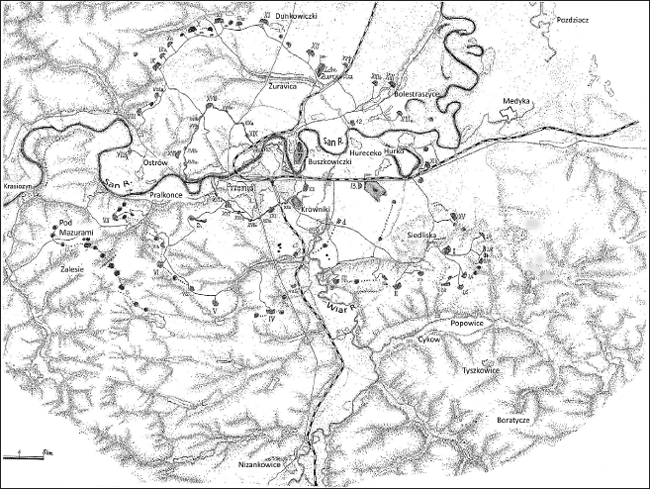
Map 1.1. Overview of Fortress Przemyl.
Fortress Przemyl, an isolated and basically unknown garrison town on the San River that was surrounded by a series of hills only twenty-eight kilometers from the Galician frontier, slowly assumed a pivotal role in Habsburg eastern front military strategy and the battles against Russia during the disastrous 1914 deployment, the chaotic September retreat, the fall 1914 Habsburg offensives, and the ill-fated Carpathian Winter War campaign during the first half of 1915. As the strongest Habsburg bulwark in the region, Fortress Krakw, 140 kilometers to the north, became significant because it represented a flank threat to any enemy force attempting to cross the San River and proceed into the Carpathian Mountains. During the Habsburg military campaigns of late 1914 and early 1915, one specific objective stood outthe liberation of
Next page


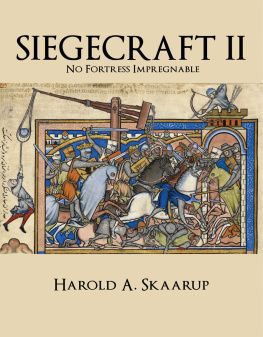
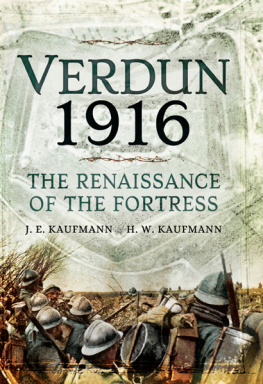
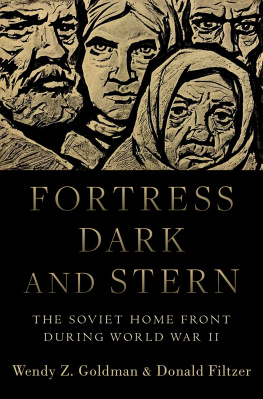
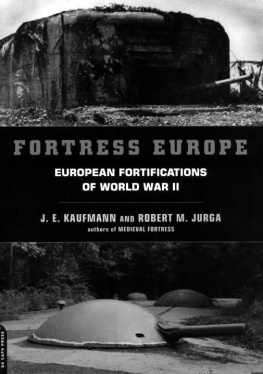

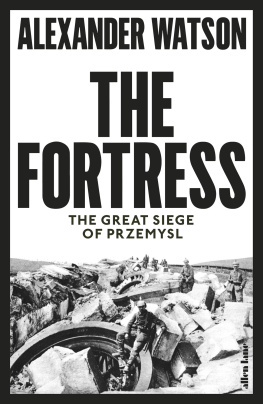

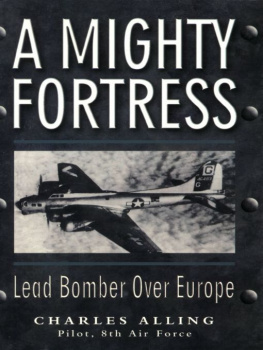

 IN
IN 

